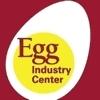Beak to Toes: Impact, Causes, and Prevention of Toe Pecking in Laying Hens




Butterworth, A., & Weeks, C. (2009). The Impact of Disease on Welfare. The Welfare of Domestic Fowl and Other Captive Birds, 9, 189–218. https://doi.org/10.1007/978-90-481-3650-6_8
Cloutier, S., Newberry, R. C., Honda, K., & Alldredge, J. R. (2002). Cannibalistic behaviour spread by social learning. Animal Behaviour, 63(6), 1153–1162. https://doi.org/10.1006/anbe.2002.3017
Coria-Avila, G. A., Pfaus, J. G., Orihuela, A., Domínguez-Oliva, A., José-Pérez, N., Hernández, L. A., & Mota-Rojas, D. (2022). The Neurobiology of Behavior and Its Applicability for Animal Welfare: A Review. Animals : An Open Access Journal from MDPI, 12(7), 928. https://doi.org/10.3390/ani12070928
De Haas, E. N., Newberry, R. C., Edgar, J., Riber, A. B., Estevez, I., Ferrante, V., Hernandez, C. E., Kjaer, J. B., Ozkan, S., Dimitrov, I., Rodenburg, T. B., & Janczak, A. M. (2021). Prenatal and Early Postnatal Behavioural Programming in Laying Hens, With Possible Implications for the Development of Injurious Pecking. Frontiers in Veterinary Science, 8. https://www.frontiersin.org/articles/10.3389/fvets.2021.678500
Dennis, R. L. (2016). Adrenergic and noradrenergic regulation of poultry behavior and production. Domestic Animal Endocrinology, 56, S94–S100. https://doi.org/10.1016/j.domaniend.2016.02.007
Gebhardt-Henrich, S. G., Mueller, S., Zanini, L., & Toscano, M. J. (2023). A survey about the welfare problem “toe pecking” in Swiss laying hens. Applied Animal Behaviour Science, 259, 105854. https://doi.org/10.1016/j.applanim.2023.105854
Kjaer, J. B., & Bessei, W. (2013). The interrelationships of nutrition and feather pecking in the domestic fowl.
Krause, E. T., Petow, S., & Kjaer, J. (2011). A note on the physiological and behavioural consequences of cannibalistic toe pecking in laying hens (Gallus gallus domesticus). Archiv Fur Geflugelkunde, 75, 140–143.
Light of Evolution. Brain, Behavior and Evolution, 95(6). https://doi.org/10.1159/000516787
Marchewka, J., Sztandarski, P., Zdanowska-Sąsiadek, Ż., Damaziak, K., Wojciechowski, F., Riber, A. B., & Gunnarsson, S. (2020). Associations between welfare and ranging profile in free-range commercial and heritage meat-purpose chickens (Gallus gallus domesticus). Poultry Science, 99(9), 4141–4152. https://doi.org/10.1016/j.psj.2020.05.044
Mehlhorn, J., & Caspers, S. (2021). The Effects of Domestication on the Brain and Behavior of the Chicken in the Light of Evolution. Brain Behavior and Evolution, 95(6), 287–301. https://doi.org/10.1159/000516787
Meyer, B., Bessei, W., Vahjen, W., Zentek, J., & Harlander-Matauschek, A. (2012). Dietary inclusion of feathers affects intestinal microbiota and microbial metabolites in growing Leghorn-type chickens. Poultry Science, 91(7), 1506–1513. https://doi.org/10.3382/ps.2011-01786
Michel, V., Berk, J., Bozakova, N., van der Eijk, J., Estevez, I., Mircheva, T., Relic, R., Rodenburg, T. B., Sossidou, E. N., & Guinebretière, M. (2022). The Relationships between Damaging Behaviours and Health in Laying Hens. Animals : An Open Access Journal from MDPI, 12(8), 986. https://doi.org/10.3390/ani12080986
Rørvang, M. V., Hinrichsen, L. K., & Riber, A. B. (2019). Welfare of layers housed in small furnished cages on Danish commercial farms: The condition of keel bone, feet, plumage and skin. British Poultry Science, 60(1), 1–7. https://doi.org/10.1080/00071668.2018.1533632
Savory, C. J. (1995). Feather pecking and cannibalism. World’s Poultry Science Journal, 51(2), 215–219. https://doi.org/10.1079/WPS19950016
van der Eijk, J. A. J., Rodenburg, T. B., de Vries, H., Kjaer, J. B., Smidt, H., Naguib, M., Kemp, B., & Lammers, A. (2020). Early-life microbiota transplantation affects behavioural responses, serotonin and immune characteristics in chicken lines divergently selected on feather pecking. Scientific Reports, 10(1), Article 1. https://doi.org/10.1038/s41598-020-59125-w




















